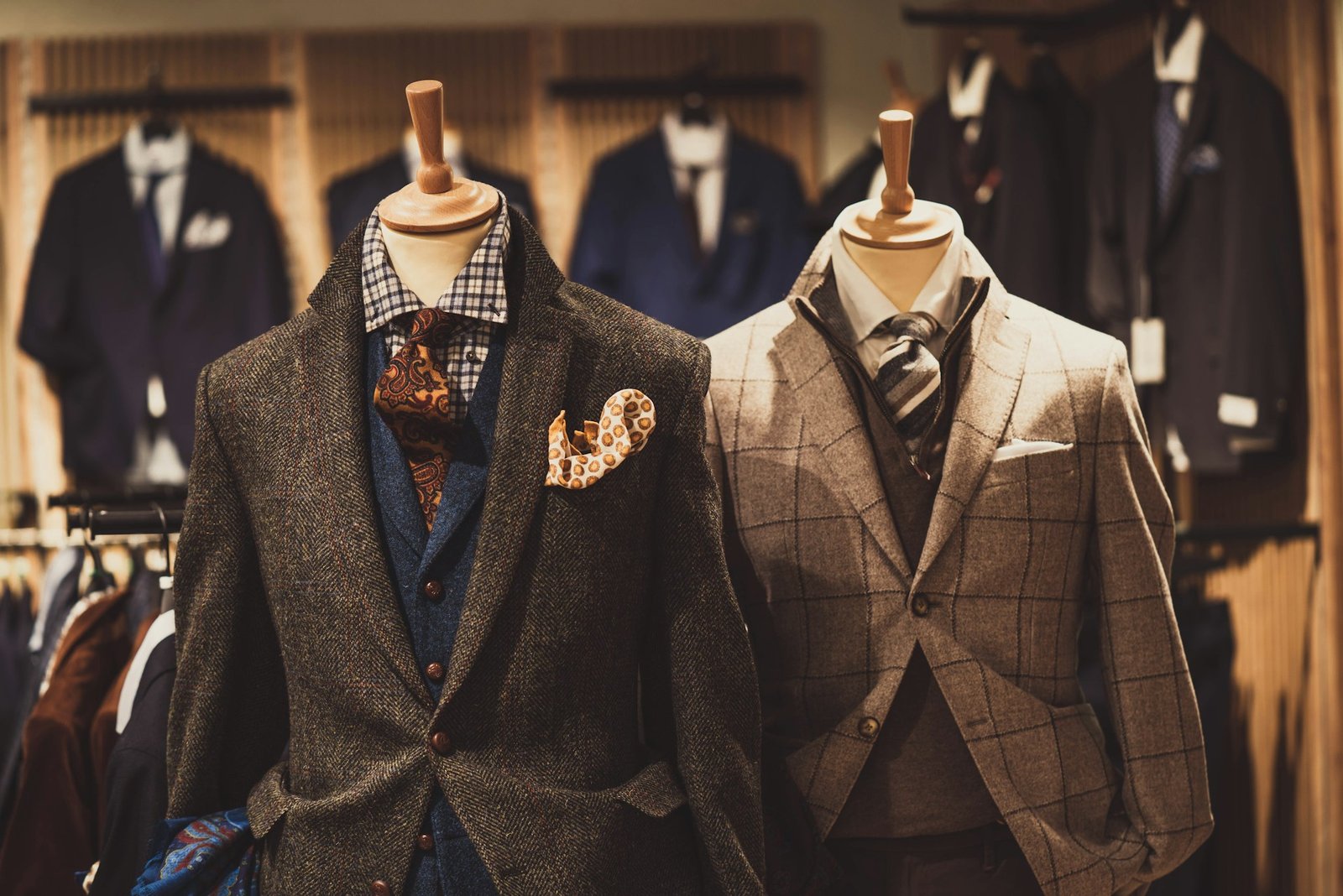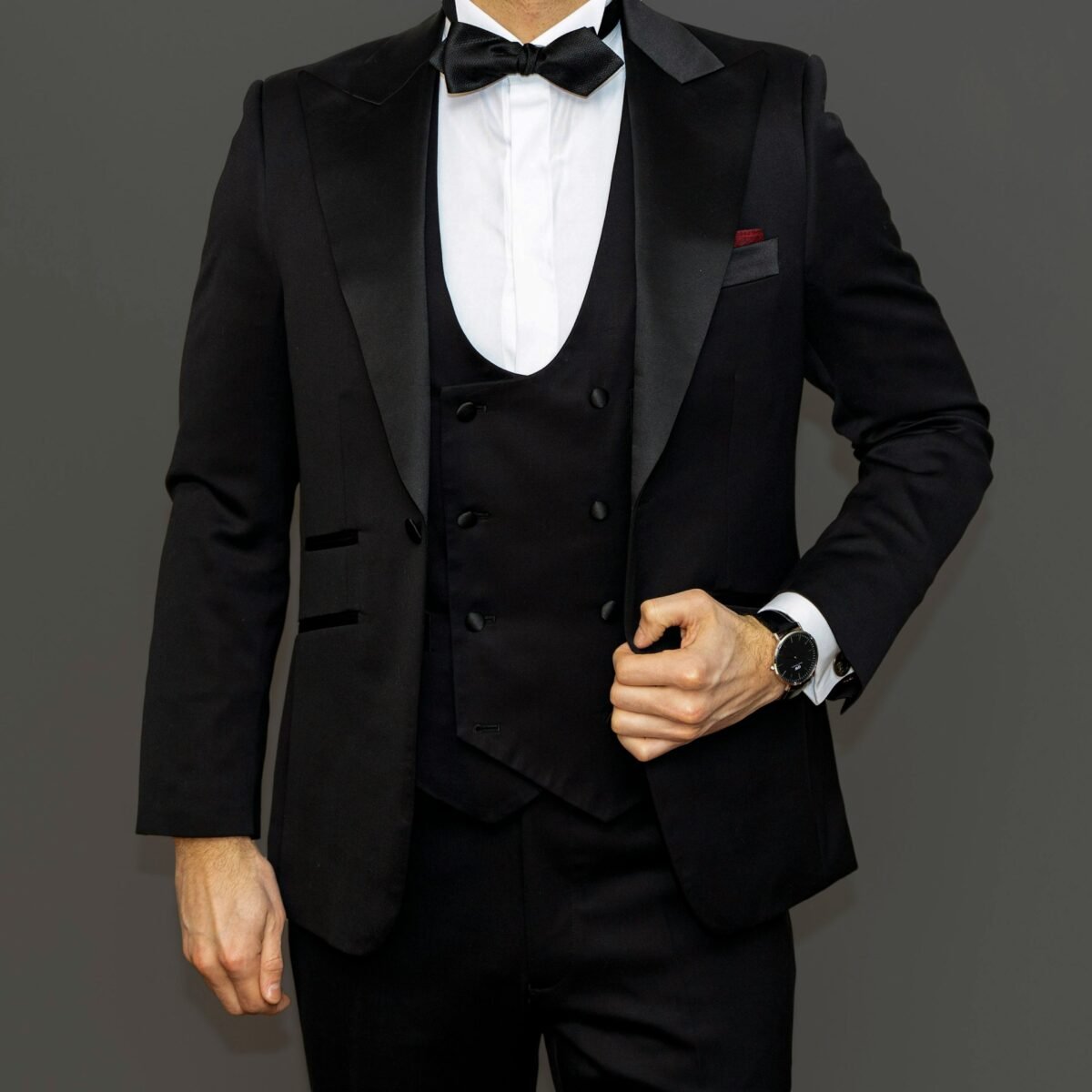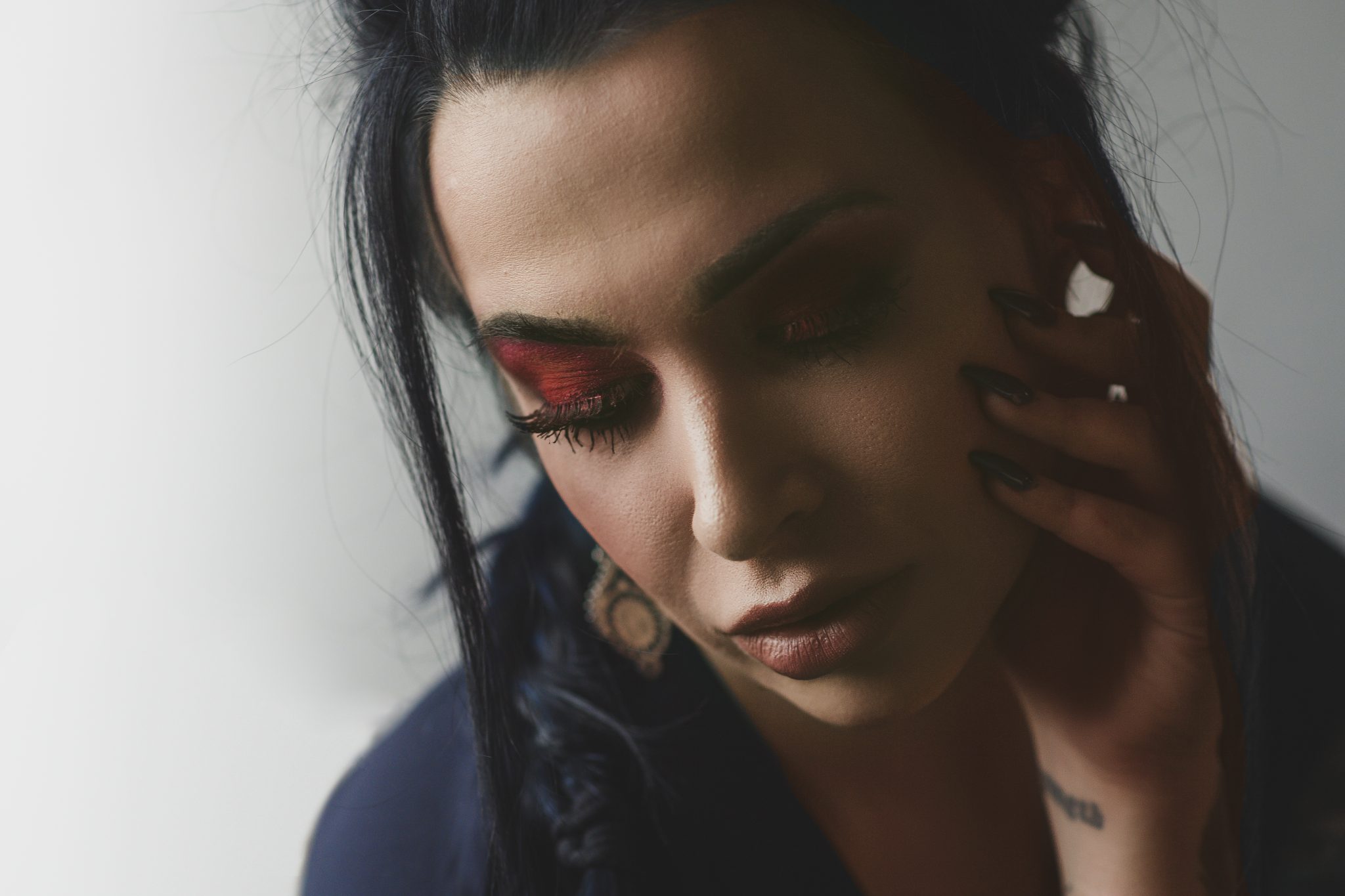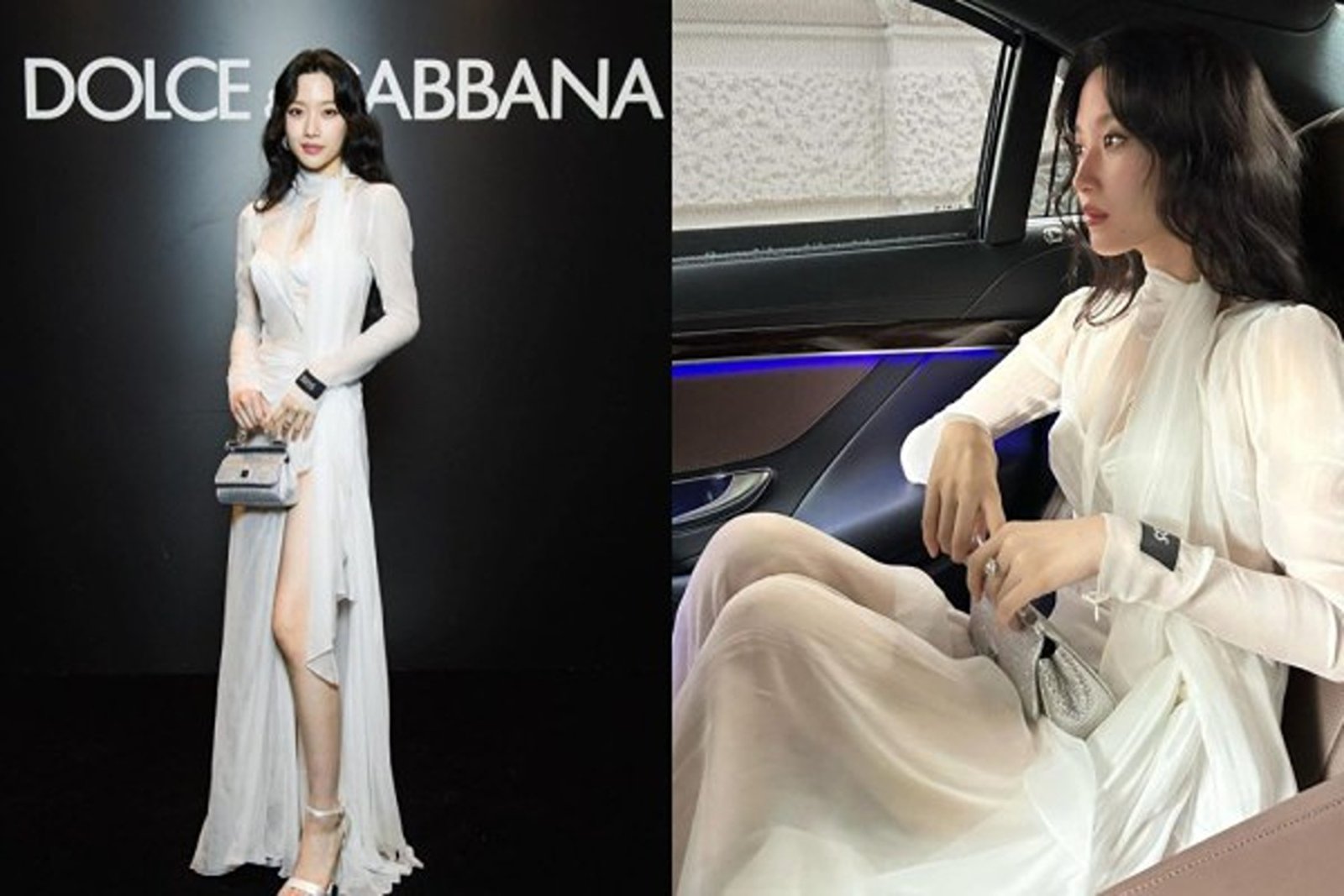The tuxedo becomes a canvas for both cultural expressions and global inspiration—a timeless dialogue between tradition and innovation.
The Core Essence of a Tuxedo
The tuxedo, or “dinner jacket,” as the gentlemen on Savile Row fondly refer to it, emerged in the late 19th century as a less formal alternative to the tailcoat, yet it remains refined. The key elements? A satin or grosgrain lapel, typically paired with a matching satin stripe on the trousers. Understated elegance is the name of the game.
Mens tuxedos are all about simplicity, exuding confidence without uttering a word. It represents a graceful balance between formality and fashion, a union of timeless style and adaptable elegance. A tuxedo embraces you like a trusted confidant at any soirée, enriching your presence without upstaging the moment.
The Classic Tuxedo: An Ode to Timelessness
The classic tuxedo, with its hallmark satin lapels and sleek trousers, stands as a pillar of elegance—unchanged in its fundamental ethos for over a century. Its appeal lies in its simplicity, formality, and subtle intrigue, embodying a grace that whispers “timeless.”
- Cut—Traditional, with an understated yet precise fit.
- Color—Black or midnight blue—extravagant, yet restrained.
- Pairing—Crisp white shirt, black bow tie, and polished leather shoes. Minimal accessories maintain the equilibrium of its dignified allure.
Cultural Interpretations of the Tuxedo
Traditional English Tuxedo
In England the tuxedo is often synonymous with understated charm. Think black or midnight blue jackets with a subtle but precise drape, crafted-to-perfection tailoring that feels as natural as a second skin. It has long set the standard globally—English quintessential tuxedo embodies a refined gentleman’s reserve.
Embraces the virtues of understated elegance and timeless design. For the British Classic simplicity reigns supreme. Opt for a classic black tux with satin-faced lapels and trousers with a subtle satin stripe. Pair it with a crisp white dress shirt, a black bow tie, and polished Oxfords. Add traditional cufflinks for a dash of elegance.
It whispers sophistication, reassuring without extravagance—a nod to tradition with a stiff upper lip.
American Panache
Across the Atlantic, the tuxedo often takes on a bolder personality. Americans sometimes embrace color or pattern, choosing midnight blue or even burgundy as a nod to individuality, yet maintaining that elegant silhouette. Here, it’s a celebration of personal flair within the boundaries of tradition.
The American example embodies a spirit of individualism and innovation. Inject personality with midnight blue hues. Choose a peak lapel for a slightly bolder statement. Pair with a cummerbund or waistcoat for that classic American edge. Consider patent leather shoes to add that extra gloss.
It’s the classic reinvented with a confident step, indicating both respect for tradition and a moving-forward ethos.

Mexican Charisma
In Mexico you may find the tuxedo infused with a vibrant cultural flair. A tribute to rich cultural history and artistic expression. Embroidered details or rich fabrics can offer a nod to traditional Mexican motifs, demonstrating how regional craftsmanship enhances this classic attire with bold spirit and heritage.
Style tips here—look for intricate embroidery or bold colorful accents that reflect Mexican heritage. Perhaps a shawl collar, a nod to the historical charro influence. The accessories can be lively—a hand-rolled silk pocket square or local artisan-made cufflinks.
Traditional Mexican tuxedo showcases vibrancy and warmth, reflecting the soul of a rich tapestry of tradition and innovation.
Italian Sprezzatura
Oh, Italians! Italian tuxedo represents a joyful embrace of the finer pleasures in life. These gentlemen with their innate sense of flamboyant elegance, often bring suave twists to the tuxedo. Expect impeccably elegant cuts hugging closer to the body and trims that informally whisper Italian superiority in textile mastery and style.
The art of sprezzatura—nonchalantly exuding style, grace, and passion all at once, without appearing to try too hard.
Japanese Minimalism
Japanese interpretations of the tuxedo often incorporate elements of minimalist aesthetics, focusing on clean lines and high-quality fabrics. This embodies a unique blend of Western style and Japanese sensibility—where meticulous attention to texture and form harmonizes with the tuxedo’s intrinsic elegance.
For instance, the precision in tailoring often mirrors the craftsmanship found in traditional Japanese attire, celebrating subtle sophistication rather than overt adornment.

American Influence
There’s a significant American influence, especially post-World War II, when Western culture permeated many aspects of Japanese life. American occupation brought with it cultural exchanges, and Western formal wear like the tuxedo found its place in Japanese society, adapting to local tastes.
British Influence
And, let’s not discount the impact of traditional British suiting style on Japan either. The British suit’s emphasis on quality tailoring and timeless aesthetics also left its mark, informing the Japanese approach to craftsmanship with precision and an eye for detail.
Styling the Japanese Gracefulness
Opt for a minimalist approach, focusing on clean lines and exceptional fabric quality. A monochrome look with a subdued tie or bow tie keeps it slick and refined. This approach channels precision and an appreciation for pure, understated beauty. It emanates modest confidence and meticulous craftsmanship.
The Japanese tuxedo is a great example of a cultural dialogue. It speaks to how clothing can transcend its functional roots to become a medium of cultural exchange, adaptation, and expression. While adopting Western formal attire, Japan brings its own cultural lens, imbuing the tuxedo with a unique character that reflects both imported influences and native artistry.
Just as cultural nuances can inflect tuxedo fashion, the influence can weave the other way around. An English-tailored tuxedo might inspire global designers to adopt refined cuts and minimalist detailing. Like the Japanese tuxedo as well. Meanwhile, elements from a Mexican-inspired tux, rich in color and texture, could find their way into global fashion, redefining evening wear with an international flair.
Non-Traditional Tuxedos: The Rebellion Within Tradition
We are living in times that encourage bold individual expression and rapid experimentation. This brings forth evolutions in tuxedo fashion that bend traditional rules while respecting their foundational elegance.
Cut and Fabric—Modern Influence
Contemporary designers might play with silhouettes—slim-fit jackets or trousers making a bolder fashion statement. Materials such as velvet or eco-friendly fabrics bring a fresh twist while maintaining refined essences.
Colorful Renaissance
An emergence of colors beyond classic black or blue—think forest green, deep burgundy, even patterned fabrics. These hues make tuxedos viable beyond black-tie events, offering versatility without sacrificing class.
Casual Interplay
The bold pairing of tuxedo jackets with items like designer denim or quirky sneakers exemplifies fashion’s dynamic dialogue between formal and informal. It challenges conventions while wanting to maintain a level of sophistication.
Accents and Accessories—Sartorial Experimentation
Incorporating adorned lapels, personal handkerchiefs, statement watches or ties lends a personal narrative to the classic tuxedo ensemble, making it a pure canvas for self-expression.
Global Inspirations
This evolution is a testament to the adaptable, ever-relevant spirit of fashion, bridging heritage with modern interpretations. The respect lies in honoring the tuxedo’s origins while permitting personal expression and contemporary inflections to flow into its form.
In every stitch and every fold, all these tuxedos carry stories and innovations from diverse cultures. This balance of reverence and rebellion is what keeps fashion excitingly rooted yet forward-looking. It’s an exhilarating dance—finding perfection in blending tradition with modernity.






